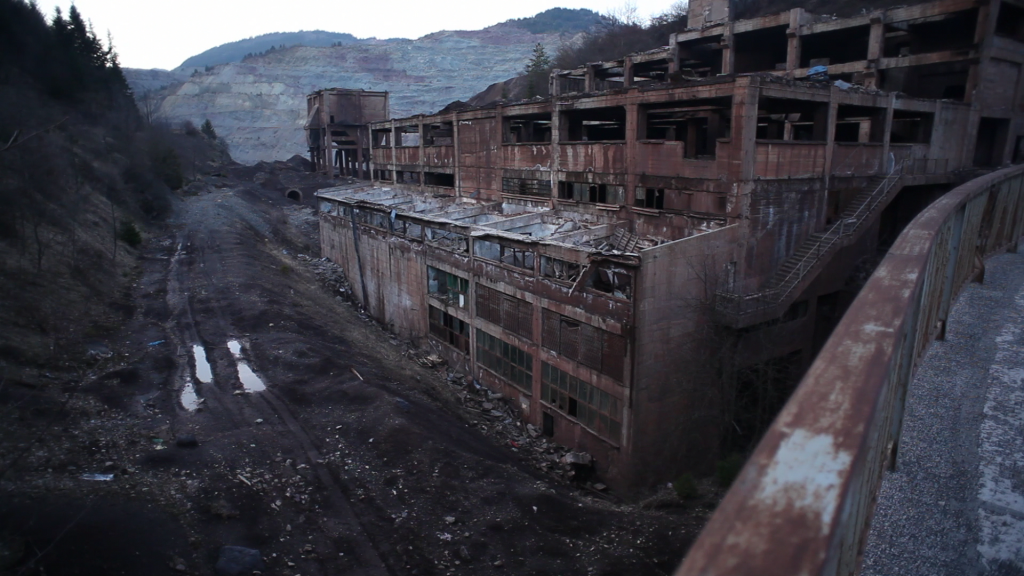
Two generations, seven different stories: Uspomene 677 is a powerful investigation into the effects and scope of PTSD and transgenerational trauma.
Two generations, seven different stories: Uspomene 677 is a powerful investigation into the effects and scope of PTSD and transgenerational trauma. This is the fourth installment of our mini-series on Post-Traumatic Stress Disorder (PTSD) and the visual arts. See Part III for a brief history on transgenerational trauma. To begin at Part I of this series, click here.
“If they live in an atmosphere that excludes others and those who are different; if they are spreading hopelessness, fear, animosity towards others; then young souls and hearts will absorb that.”
– Franjo Komarica, Bosnian Croat, Catholic Bishop of Banja Luka (Uspomene 677) –
Uspomene 677 is a feature-length documentary film produced in Bosnia-Herzegovina by Pinch Media (London) the Post-Conflict Research Center and directed by Mirko Pincelli. Madein 2011, the film follows the lives of three survivors of the 1992-1995 Bosnian War and four young people who were born during or just after the ceasefire was signed. It reveals both the horrors that survivors faced as well as their ongoing attempts to heal from their trauma. Interviews with these survivors are then intercut with testimonies from four young people. In listening to these young people tell the stories of their own lives and the lives of those around them, viewers get a real sense of the deep scars these adolescents face as they try to make sense of a legacy that was not of their own doing. Highly personal and deeply moving, Uspomene 677 is an intimate picture of the transgenerational transmission of PTSD. The film is unique and important in that it shows that the trauma of PTSD is not just experienced and transmitted to the children of the victims of war, but can also be found amongst perpetrators and their children.
Take Tatjana, for example. Tatjana is the 17-year-old daughter of a former soldier. She was born in 1994 and, although not directly affected by the conflict, the challenges she now faces can still be attributed to the Bosnian War. Tatjana’s parents are divorced, a fact she directly links to her father’s drug problem and his inability to talk about the horrors he experienced as a soldier.
“[People] wondered what triggered my father’s addiction … and everything else he did in relation to narcotics. I always bring up the fact my father was a soldier … who fought during the war. I always connect these two things. My father does not talk a lot … about the war; what he saw, lived through and everything else. I realize how hard it is for him to talk. He cannot make a sentence which does not sound like: ‘You do not know how it feels to see all that.’ ‘You do not know how hard it is to see all that blood and all those men.’ One thing led to another, and the problems in our family started showing up. I connect those problems with the war.”
Here we have all the classic signs of the transgenerational transmission of PTSD. A parent who has experienced deep physical and psychological trauma (the horrors of war) retreats into himself believing that no one else can understand his pain. Unable to recover, he uses narcotics, and ends up in jail. This wreaks havoc on his family. Distraught by his actions, his daughter spends much of her life trying to rescue him. “I feel very sorry for everything that happened to him,” says Tatjana, “and during my whole life I have been trying to help him with that issue.” This attempt to “save” the parent is a typical outcome of the transgenerational effects of PTSD (Leiner, 2009).
Contrast Tatjana with an anonymous young man who begins to appear towards the end of the movie. Identity-less, his voice appears out of the darkness:
“When I was a kid, other kids always asked me what my religion was. I would always tell them: ‘I am Alen [sic].’ I did not know what religion was. I came from a mixed family of Croats, Muslims and Serbs. My father is Ermin Čurtić. He has been charged with war crimes in the village of Stupni Dol in Vareš.”

This young man’s story is the story of the son of a perpetrator. Like Tatjana, his life has been profoundly affected by the actions of his father. Distancing himself from his friends for fear of reprisal and many sleepless nights are just two of the outcomes of the intergenerational trauma he faces on a daily basis.
The brilliance of Uspomene 677 as a movie is that it forces the viewer to question just who is the “victim” of intergenerational trauma. Neither Tatjana nor the anonymous young man is shown to be “damaged.” They are not “sick,” nor do they have a “psychopathology” in any way. Neither are they the “victims” of war. On the contrary, they are courageous and intelligent young people who have successfully navigated the challenges of their particular histories, while continually striving for a better future. Similarly, while Bishop Komarica’s speech that commenced this piece could easily be read as a description of the conditions of transgenerational trauma, he is actually describing the process by which nationalism is transferred from one generation to the next. Uspomene 677 dares to ask who exactly are the transgenerational victims of trauma? Is it those who have been subjected to PTSD or those who have been subjected to fervent nationalism?
*Uspomene 677 is now available for download on iTunes.
Next up: Post-Traumatic Stress versus Post-Traumatic Growth (Part V)
—
Selected further reading
Leiner B. (2009). The legacy of war: an intergenerational perspective. Smith College Studies in Social Work, 79 (3-4): 375-91.






